As Gen Z continues to grow into its place in the world, new trends among a connected generation are emerging. Let’s see how Gen Z consumers and creators affect current marketing.
Not surprisingly, they’re increasingly glued to their mobile devices and their behavior is unlike anything the market has experienced before.
Generation Z is paving precedents for the latest marketing trends and therefore, companies need to learn how to market to Gen Z.
Introduce authentic, engaging, and captivating content as marketing focus. These people are enabled. You need to grab any opportunity to evolve your online prescience to eventually meet Gen Z halfway!
These hip (yes- using that word makes us instantly too old), young audiences have turned the consumption of attention-grabbing content into the new normal.
As 98% of Gen Z users are likely to own a mobile device by the age of ten. The social media arena has altered to satisfy the growing market demographic.
Instead of long and general advertisements, Gen Z users are more likely to respond to quick and personalized clips.
Table of Contents
Generation Z and social media go hand in hand
Instead of using older, more static platforms like Facebook and Twitter, you’re likely to find Gen Z browsing more dynamic apps. Namely, TikTok or Instagram.
This article breaks down the popular platforms amongst the Gen Z population and explains how they work and why they work.
The future of your brands content strategy will evolve as your demographics shift.
Are you currently letting users subscribe to short, attention-grabbing, and high quality content?
Captivate your audience’s interest. Remove the fluff that often results in a bounce, exit, or skip to the next video.
Keep in mind, the rising streaming platforms offer longer content that pairs well with captivating streamer personalities.
These social media platforms reveal the secrets that keep them relevant to Gen Z. All the while, each platform features qualities unique to one another.
The most popular platforms attract Gen Z for similar reasons. After all, to satisfy your customers, you have to take a look at who is on the other side of the screen.
So, are you ready to know how your business can amplify its online presence and Gen Z focus marketing efforts? Keep reading!
Generation Z Demographics:
- The generation “after Millennials” and before “generation alpha.”
- Described as “risk adverse” while also less likely to use drugs, consume alcohol, have fewer underage pregnancies.
- Generation Z will soon become the largest consumer population in the United States with 82 Million people
- Gen Z was born between 1996 – 2010.
- This is the first generation raised on the internet, mobile connected, and using social media prior to high school.
- Considered to be the most diverse and well educated generation in history.
Generation Z and TikTok

Regardless of whether you’re a Boomer or Millenial, you’ve likely taken notice of the engrossing hype around the video-sharing app, TikTok.
This Vine-like video sharing platform recently gained traction after its launch in 2018. It earns its title as the #1 downloaded app shortly after in 2020.
Ever since, Gen Z has refused to settle without the Chinese-owned social media platform.
TikTok’s interface features easy-to-create 60-second clips of users dancing and lip-syncing to top tracks. Users can share and interact with posts and follow their favorite TikTokers.
The app’s attractive layout attracts users of all ages. Its most concentrated demographic, Gen Z users, compose almost 70% of all TikTokers. In recent years, TikTok has grown to establish its respect as an incredibly popular and common app for Gen Z users with its seamless content.
What makes the TikTok so popular?
TikTok presents a refreshing layout of short and catchy clips that can be replicated, shared, and dueted. Today, Gen Z users tend to gravitate towards these quick, shareable snippets of content that are prevalent on the video platform. This format gives businesses new ways for marketing to Gen Z consumers.
Popular apps like TikTok, Instagram, and Snapchat use this characteristic to keep their audience engaged.
To earn its title as the #1 downloaded app, TikTok invests in key factors that distinguish itself from other apps. Here are some reasons why Gen Z is TikTok-crazy.
Related Article: How to Upload TikTok Videos from your PC
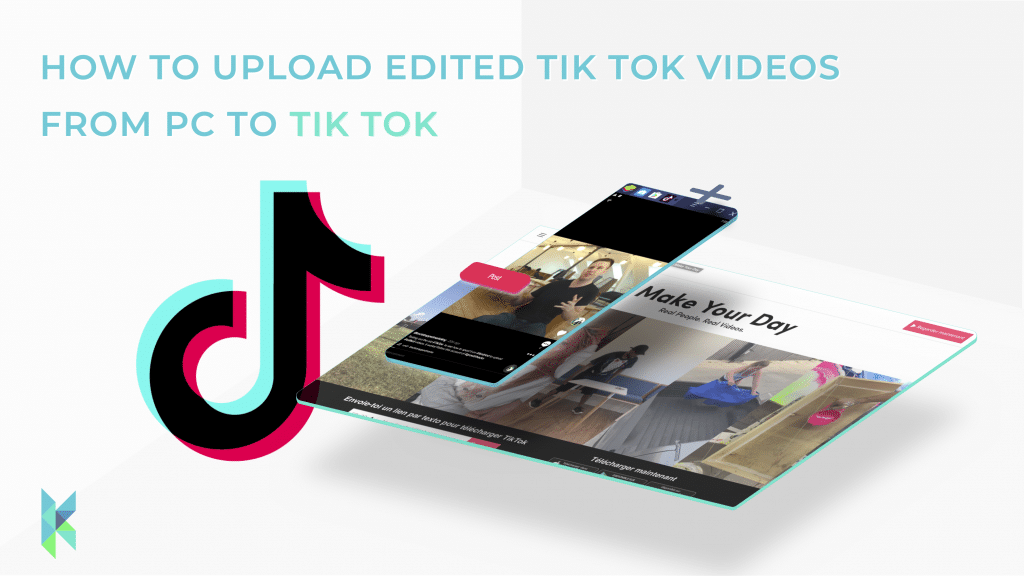
Attention-Grabbing Content
TikTok’s user interface is favorable to Gen Z users because the platform integrates endless feeds of videos layered one on top of the other. This easy to use, scrollable content makes the app enticing to browse.
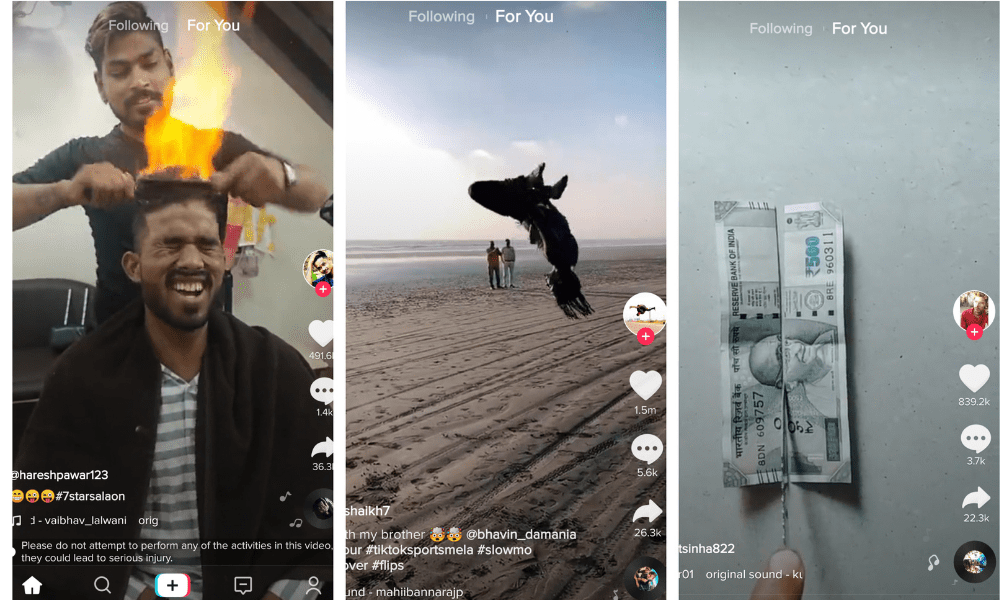
The handy share and like button found on the right column of the screen.
Coupled with an accessible banner displaying the name of the soundtrack being played in the video, TikTok’s features promote simple content replication.
With these tools, users have great liberty to recreate, authenticate, and personalize new videos. TikTok creators are, in essence, self-proclaimed “artists.”
This is where paintbrushes and canvases shapeshift into an array of customizing features TikTok offers.
These features foster a sharing community of like-minded TikTokers, perpetuating interest, and engagement on the app. Plus, who doesn’t love browsing endless entertaining videos when they’re chilling on the couch? Gen Z sure does, and it’s largely due to how this group grew up.
What does that mean to Gen Z marketing?
Gen Z is the generation that grew up with technology and lightning-fast browsing at their fingertips.
They appreciate content that is bundled in one place.
In fact, the less work they have to do to consume the next piece of content, the more likely they are to actually interact with it.
TikTok makes it easy for users to stay gripped in their feed through endless streams of videos. Therefore, users are more inclined to glue themselves on the app.
In fact, the average TikTok user spends about 46 minutes a day on the app.
Whereas users spend an average of 28 minutes a day on Instagram browsing through photos.
The disparity between users on these two platforms could indicate that users prefer video content over photographic content prevalent on Instagram.
This significant shift in the target market indicates an upheaval of old-fashioned interests and outdated business strategies.
Gen Z makes up more than 40% of the consumer market in 2020. Businesses must adjust their marketing strategies to appeal to gen z.
Generation Z Produces Their Own Content
TikTok’s success is additionally attributed to the authentic content creators can freely produce.
TikTok’s algorithm encourages lesser-known creators to post unique content that won’t be piled under larger influencers’ content.
This means first time content creators on TikTok get a huge number of views on the platform to encourage them to create more.
The platform gives users equal opportunity to amass thousands of likes and views, contributing to its popularity amongst the young and creative entrepreneurial generation.
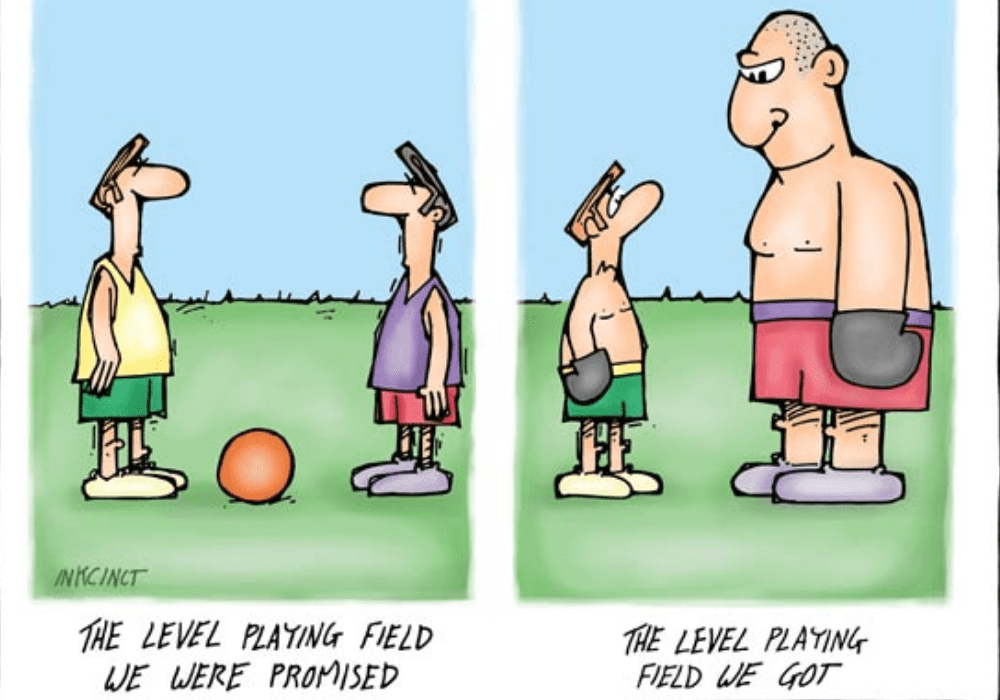
Unlike many platforms that prioritize better-known content creators, TikTok’s algorithm encourages creativity and originality.
TikTok lets the quality of the content be the determining factor of a successful post.
Not the size of your following or past engagement rates.
Related Article: Types of Content Creators

This level playing field is especially attractive to Gen Z users who don’t follow the celebrity bandwagon obsessively.
Gen Z users are aware of the celebrity scene, with 29% of Gen Z heavily influenced by them. However, they prefer influencers that cater towards smaller, niche-specific audiences. Gen Z consumers don’t react to huge marketing campaigns with celebrities as ambassadors the way older generations do.
TikTok’s popularity exemplifies this preference.
Numerous self-made TikTok stars demonstrate this phenomenon of small scale influencers. These types of individuals also tend to be more engaged than their celebrity counterparts.
What makes the distinction between celebrities and influencers so important?
Smaller influencers tend to host a more honest and credible profile than famous celebrities.
Influencers post content that is niche-specific. They also have a modest following in comparison to the average celebrity.
Gen Z value this modesty and look up to individuals that make an impact on their communities. Gen Z has a tendency to follow more high impact influencers rather than high profile celebrities. That’s why they are more likely to mimic this responsibility and become influencers themselves.
In fact, a study found that around 54% of Gen Z individuals indicated their interest in becoming entrepreneurs.
TikTok helps these budding entrepreneurs and influencers build their platform. It connects Gen Z users to other similar users to build a community.
It’s no surprise that Gen Z’s familiarity with technology is their strongest asset.
They are accustomed to a dual universe of accessible information at the click of a button. The ease of connecting with others and sharing content lays out the stage for Gen Z to promote themselves.
Related Article: How to publish TikTok Videos from your PC
TikTok’s platform of endless content creation possibilities allows Gen Zers to develop their entrepreneurial brand. With valuable resources at their disposal, all they need to do is broadcast themselves to launch their career.
Marketing to Gen Z – Consistency Is Key
The app has paved entertainment careers for numerous Gen Z creators, like Charli D’Amelio, Addison Rae, and Loren Gray. These teenagers, yes, teenagers, leveraged their brand on the TikTok app to an impressive following treading in the millions.
Although the rosy rags to riches tale glorify the road to stardom, one teenager’s rise to TikTok fame stands out from the blend.
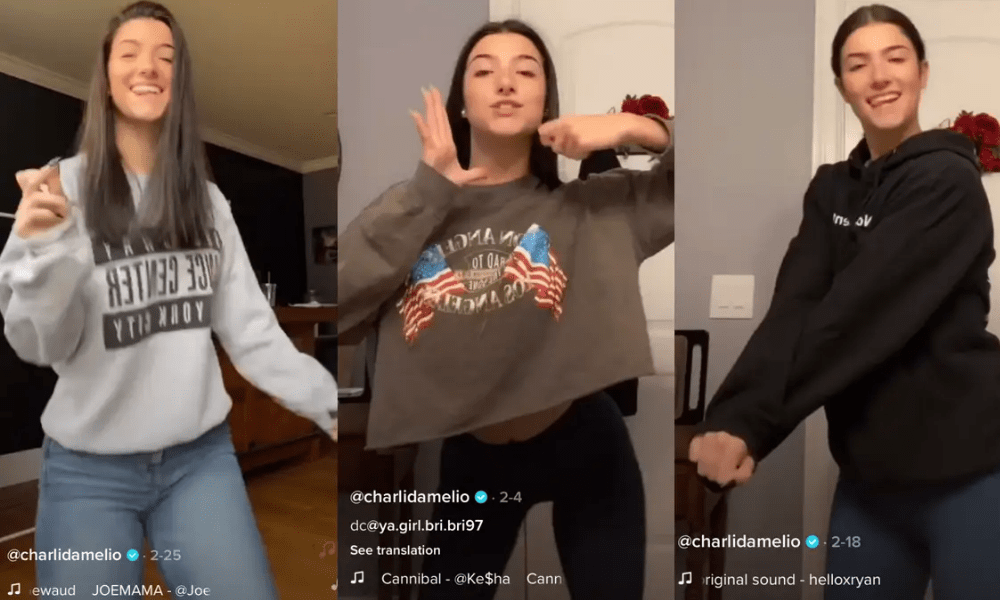
Charli D’Amelio’s success doesn’t trail the typical gradual rise to fame. She amassed more than 5 million followers within one week of beginning her channel. It leaves many scratching their heads, wondering how she did it.
The answer? A combination of luck and good timing.
TikTok gives users exposure to its global stadium through internationally popular dance trends that circulate on the platform. Within days, a successful video can amass millions of views. Yet, it is quite challenging to curate an impressive following within a week as Charli did.
The key distinguishing factor that makes TikTok stardom more difficult to achieve than on any other platform is consistency. That’s how Charli D’Amelio catapulted to the top of the TikTok hall of fame.
Consistent posting is the key to growing a TikTok platform.
Unlike Instagram, where one post can go viral and permanently grant your profile status, to succeed on TikTok, content creators must curate regular posts that consistently do well.
If not, one successful post will run dry by the time other trends begin to pick up.
That’s why it is critical for TikTok influencer wannabees to stay up-to-date. Especially, with the latest circulating trends that pick up more views and attention.
This expectation feeds into the cycle of trendsetting and strings of viral challenges that define the TikTok experience. TikTok users build off of these tools to engage their following and create more content that succeeds in their audience. This is also how TikTok creates its influencers.
When popular content creators are driven to post bandwagon challenges, TikTok trends and creators surface, and brew in popularity. Trends simultaneously feature unique dances and soundtracks, promoting artists’ work, and encouraging more TikTok content to become viral.
TikTok’s message to consumers and businesses is that users, specifically, Gen Z users, like to see interactive and creativity-driven content they can create and share themselves.
These challenges are successful with Gen Z. The familiar TikTok humor users share since curators are concentrated in a consistent age range. Also, TikTok is a community for creators to share and explore their creativity.
Although the instruction appears quite straightforward, this cyclical pattern seems to abbreviate the work necessary to be successful on TikTok. Not everyone who consistently posts can share the glory of being “TikTok famous”.
Regardless, TikTok star hopefuls strive to differentiate their platform and build their unique brand through the unique outlet. Not just for the views but to satisfy their entrepreneurial spirits.
But, when TikToks go viral, why does that happen? What does Gen Z like to see? Let’s take a look at how TikToks can go viral and its underlying groundwork.
TikTok Goes Viral With Generation Z
While Gen Z spends time on fewer apps, they also tend to spend more time on certain platforms. Gen Z users favor digestible content they can share with their friends. TikTok is known for its viral content, a trait that makes the app popular amongst the young generations.
Gen Z’s sharing capabilities spread popular content quickly, and TikTok’s platform supports this tendency.
TikTok’s features bring a refreshing addition to the social media experience. Unlike platforms that limit wide exposure, such as Snapchat, where a user is limited to their friend circle, TikTok’s interface spawns viral content easily through extensive profile visibility.
This type of platform has become favorable for budding artists that need increased exposure to promote their work. Through countless circulating trends shared on millions of devices, TikTok has established careers out of artists through sole trend promotion.
TikTok helped Lil Nas X’s popular song, Old Town Road, rise to the top of the charts.
This was done through a viral TikTok trend featuring his work. The song’s success goes to show that the app’s virality quickly attracts young consumers to hop on the bandwagon and spread new content quickly.
Climbing the social hierarchy on other platforms as Instagram may seem like fighting against gravity. TikTok’s popularity comes from its preference towards user-created content that gives lesser-known artists more exposure. on Tik Tok, it’s Gen Z creators who does marketing.
Connecting With Gen Z
TikTok has also recently introduced its TikTok For Business platform for marketers to connect with their audience. With over 800 million users, this could be a game-changer for many and broaden reach and engagement.
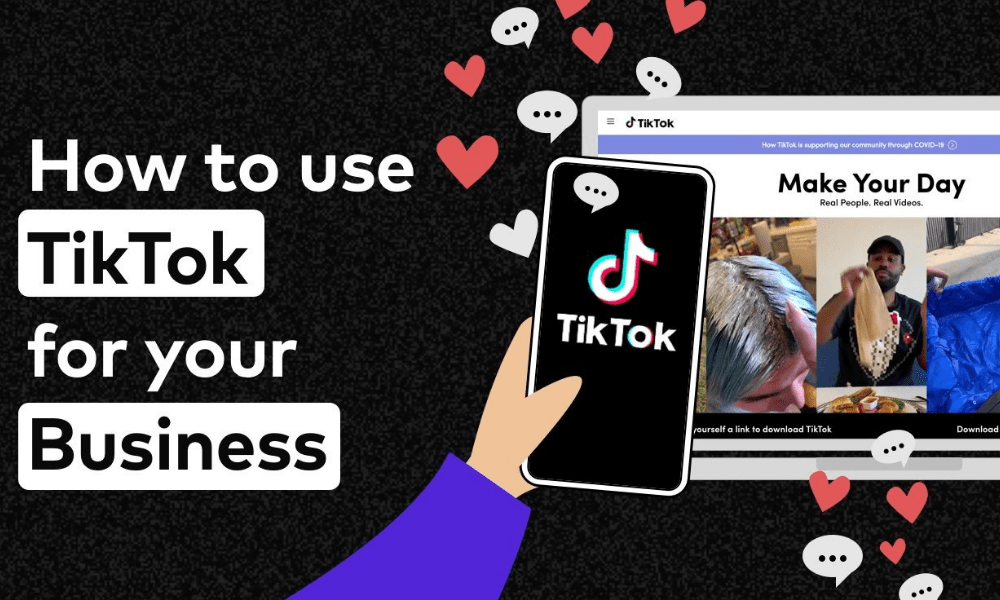
TikTok For Business encourages businesses to post engaging content to connect with younger generations. Instead of spending money on ineffective advertising, the app encourages marketers to make creative TikToks as a marketing strategy towards Gen Z consumers.
This new type of marketing strays away from traditional marketing typically displaying a catalog of black and white advertisements and soulless newspaper headings.
TikTok introduces a new wave of marketing. It suggests that the way to connect with younger audiences is with attractive and engaging content. What does this look like?
TikTok provides plenty of customizable tools to authenticate content.
Gen Z, or specifically TikTok creators can drag colorful blocks of text in random order throughout the video, create their own soundtrack, and master an original dance.
Not only is TikTok an app for creativity, but it is also a platform to share ideas with like-minded individuals. TikTok For Business signifies growing gravitation towards authentic content that doesn’t reek of capitalist advertisement.
In an age where Gen Z users watch heart-wrenching romance shows or toe-curling horror films on Netflix, it takes a lot of emotion to sway the young generation.
TikTok magnifies the importance of establishing connections and trust within an audience to properly engage them in your content. This outlines new way of marketing and advertising to Gen Z consumers.
Mobile Device Revolution
The app’s propensity to go viral through its quick connectivity features and scrollable content gives it uncredible status for leveraging a business. TikTok connects intergenerational individuals together through a user-friendly environment that pleases everyone.
As TikTok and other platforms become more popular, the trend could be hinting that the prominent mobile device could reach more individuals. It makes sense, too.
Beginning with Gen Z, mobile devices are becoming the device that users increasingly obsess over. These devices are the 21st-century television, radio, and newspaper. It indicates a transition to a more universal device, and a shift in marketing practices.
Gen Z and other mobile device users are diverting their attention away from other outlets to their handheld devices. This means users are spending less time on other outlets, indicating lessening the importance of marketing on those platforms.
TikTok seems to have it all. It combines the need for entertainment and connectivity in its succinct interface that is worshipped by the Gen Z population.
The app’s unique brand also allows these budding entrepreneurs to establish their platform through content creation, adding the icing to the cake.
Could advertising also be straying away from traditional television breaks and black and white print? TikTok may be signaling a significant shift in the wants and needs of the marketing towards Gen Z. One thing is clear, however: Gen Z is certainly changing the way marketing and advertising is done for good.
Hashtags
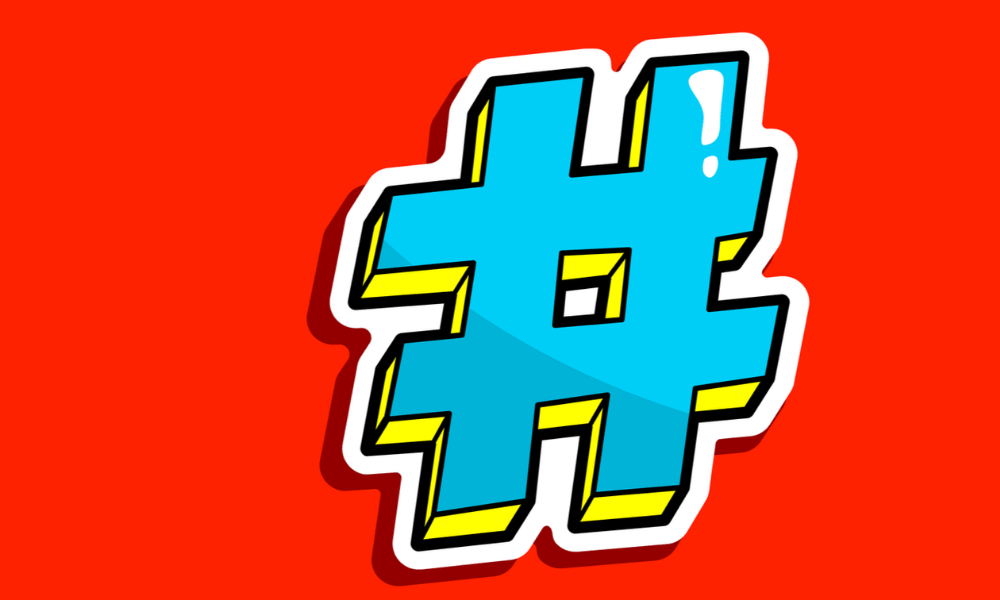
The hashtag, the pound symbol, the tic tac toe, the number sign, the octothorpe…what?
Despite what you call these tags that date far back into history, you’ve likely seen a list of these symbols frequently splattered in the captions of posts online. But how relevant are hashtags to Gen Z today. Are they worth the time and hassle to add to your posts?
Generation Z and Modern History
Now, as individuals are more inclined to use social media, hashtags are not only used to filter posts together and make searching easier and accessible. Hashtags have been integral stepping stones in fueling many social movements that begin over social media.
They have been catalysts for several well known movements, such as the Me Too Movement, which began in 2006.
This movement began to make headway in the online sphere. 11 years later in 2017 the movement began to feature its notable hashtag, #MeToo.
It became a symbol of solidarity to support women in the fight against sexual harassment.
The movement spread like wildfire over social media, igniting a consequent global movement championing women’s’ rights. Its hashtag originated through the calls for action by high-profile actresses sharing their experiences with workplace harassment.
The takeaway? Notable social causes or important messages can be exponentially effective if they are leveraged appropriately. When attempting to get a reaction out of the audience, particularly, Gen Z, hashtags should accompany a call to action that facilitates this reaction.
Today, hashtags are a growing way of expressing solidarity and a unified voice over social media. If you don’t know how to reach Gen Z, this might be helpful to incorporate. They want to know how to connect with your brand and use your hashtags to create something meaningful.
The best way to accomplish this connection is to integrate a consistent theme of hashtagging. It ingrains the message into Gen Z’s minds without coming off as unauthentic.
Generation Z And Engagement
Although using too many hashtags at a time can come off as excessive to Gen Z, when used in the right amount, hashtags can be powerful tools to boost social media presence with an engaging post.
Usually, anywhere between 11 to 30 hashtags can considerably boost engagement to 442%. If your primary audience is Gen Z, posts could potentially opt to use the lower number range of hashtags to avoid coming across as overwhelming and ingenuine.
Regardless of what general techniques say, these items of revision should be observed uniquely for each scenario to analyze a post’s individualized audience response.
Hashtags don’t only appear on Instagram or Twitter, where a majority of content is photographic content. Popular Gen Z video-sharing platforms that focus heavily on interactive, recreations of content have shown to garner massive engagement through online trends.

Gen Z’s Challenge Obsession
TikTok, for example, has paved the way to transform hashtags into a profitable marketing concept. Businesses can buy branded hashtag challenges for a flat rate of $150,000 with a six-day period promotion. These challenges give brands the potential to engage more with Gen Z, and new way how to market themselves to Gen Z consumers.
TikTok’s paid promotion requires brands to create an interactive hashtag that can be used to spread an online challenge. Users can repost challenges by creating and posting their own version of the brand’s hashtag challenge.
Gen Z’s craze with TikTok’s repost and hashtag culture stems from their desire to be an inclusive and solution-seeking generation. When social media pulls out a new trend or challenge, Gen Z users are eager to jump on the bandwagon and participate with their own spin.
Gen Z’s active engagement with the latest trends and current events makes them a unique audience to please. Their quickness to repost and move on from a trend on social media also makes them an audience that will need various creative ideas to keep them interested.
Using what marketers know about their interests, TikTok’s new challenges can allow brands to connect with Gen Z’s interests and transform them into a marketable audience that wants to create an impact.
Experiential Marketing in Gen Z
Not only is this challengeable to increase customer reach, but it also engages Gen Z’s creative outlet. These types of challenges that allow viewers to engage and create their own content is a facet of experiential marketing that Gen Z is obsessed with.
As opposed to standard advertising for Generation Z that diverts their attention to more engaging activities, like content creation, experiential marketing itself is a creative outlet that activates Gen Z’s preferences for genuine and memorable experiences.
The idea of experiential marketing is incredibly effective. Creative individuals who have shorter attention spans benefit greatly. The experience stimulates multiple areas of brain without having audiences focus on only a single sense. This would quickly bore them out
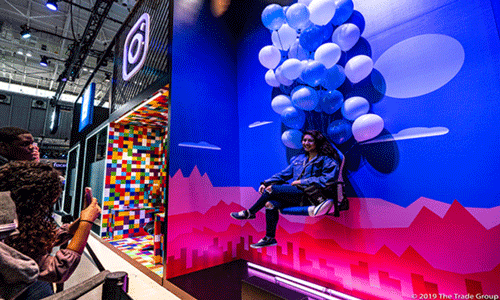
Gen Z’s fascination with creative and original content, as well as their own entrepreneurial mindset, makes them optimal creators online. Gen Z consumers are also extra receptive to this type of marketing that emphasizes the importance of creating a unique memory or connection between brands.
TikTok’s challenges reiterate how the platform was able to rapidly amass its community of hundreds of millions of Gen Z users. It comprises 60% of the 800 million TikTok users.
The app’s own concept is designed to be addictive to the creative and tech-savvy minds of these young individuals. It’s no surprise then, that the branded hashtag challenges TikTok advertises can be very effective.
How do branded hashtag challenges work ?
When TikTok begins the six-day period promotion, the app will feature full-screen promotions. These promote the challenge right when users open the app. They will then be able to decide whether they’ll participate or skip out on the challenge.
When promoting activity for a brand, it is especially important to drive awareness to its creator. Regardless of the platform host, marketing strategy focused at Gen Z should ensure that content is natural and lets users know that the content is connected to their brand.
When using promotions that appear to mask the promotional aspect of marketing and advertising, it is still important to note that Gen Z tends to glaze past advertisements that seem too unauthentic and fabricated.
Hashtag challenges by TikTok create a magnet for Gen Z audiences who want to view interactive content. So, brainstorming a strategic method and performing due diligence before diving into large-scale challenges should be a priority.
Just because certain promotions aren’t what is typically marked as “advertising,” doesn’t mean that Gen Z will be responsive to the content. Instead, promotions should focus on featuring a realistic portrayal of their brand and stay away from exaggeration.
What kind of marketing effective for Gen Z, then? If they skip advertisements on YouTube and are willing to pay extra for ad-free music on Spotify, how does a brand keep their attention on the promotion and make them want to care about the product without being overbearing?
Outstanding content that drives an entire business: Workhorse Content
Want Engagement? Share A Story
This balance of creating an interactive promotion or challenge for Gen Z while maintaining focus on the brand itself can be difficult.
If designed well, brands can get more exposure and traffic onto their sites just by investing in advertisements that introduce a new interactive side to their online promotions.
Oftentimes, brands need to rethink how their Gen Z audience perceives their content. When it comes to digital marketing, Gen Z can sniff out when something isn’t genuine.
This highly sensitive generation is in essence, “trained” to ignore uncredible brands because of how much time they spend around other shared content on the internet. In a study conducted by McKinsey, Gen Z users were consistently found to be seeking “trust” in online marketing promotions.
Marketers should try to build a connection with their audiences first
Traditional, boring marketing doesn’t work with Gen Z consumers. At all costs avoid pushing a product in their faces from the get-go.
To make the most of hashtagging and paid promotions, make sure the content presented is truthful and personable for the Gen Z community to take the time to pay attention to.
This can include sharing stories about the history and future goals of an organization or connecting with audiences through live streams with its founders.
This tactic can help establish a more permanent bond with your followers, but also give them the sense that you want them to be a part of your journey towards growth.
With Gen Z, the extra step brands take to connect and get to know them can make a difference with what they spend their time and money on. Make sure it’s on you!
Gen Z Responds To Calls To Action!
Hashtags are effective tools on all platforms. The more views a hashtagged post gets, the more likely others are to post using similar tags and continue the trend to get more exposure.
With Gen Z, hashtagging isn’t simply a method to gain more likes and followers on Instagram or Twitter. The prominence of hashtagging also lies in the “call-to-action” aspect of a hashtag.
Hashtags are a popular method to spread and group similar information or ideas together. In today’s mobile-centric world, Gen Z is particularly good at spreading information along using their mobile devices. When put together, an effective hashtag promotion can reap significant benefits.
Why? Gen Z is the generation that is most active on social media. Also they are respected as the most racially and ethnically diverse generation. They are composed of individuals who possess various ideas and backgrounds.
Gen Z is typically more receptive to new ideas.
They are more inclusive than ever, shown through their extensive track record of fueling social movements on social media.
More Gen Z users online seeking to enact change. Social media is facilitating the birth of student organizations and nonprofits dedicated to fighting social causes.
Social media’s prevalence of the hashtag is now often used to express solidarity and spread relevant information for student organizations. It informs the public and encourages to take action.
Whether it be education inequity, environmental awareness, or women’s representation in STEM fields. Gen Z takes matters into their own hands to inspire change, without waiting for others to do so.
Well, what does Gen Z’s action-oriented persona say about this generation when marketers try to catch their interest?
Gen Z’s propensity to think independently means that Gen Z is more critical of the content they see and can be harder to sway.
Their independence and free-thinking are usually also centralized through their own community circles. Whether that be with friends or on social media. This means that it is imperative to get approval through a general consensus for the majority of Gen Z to accept a certain norm.
Although Gen Z tends to think individually as a generation, their bond with other Gen Zers can be an effective tool to multiply the rate at which information travels and disseminates.
When Gen Z decides that something is genuine and well-intentioned, they will likely share it with their friends. They trust or connect with the source and are willing to do their part in spreading worthy content.
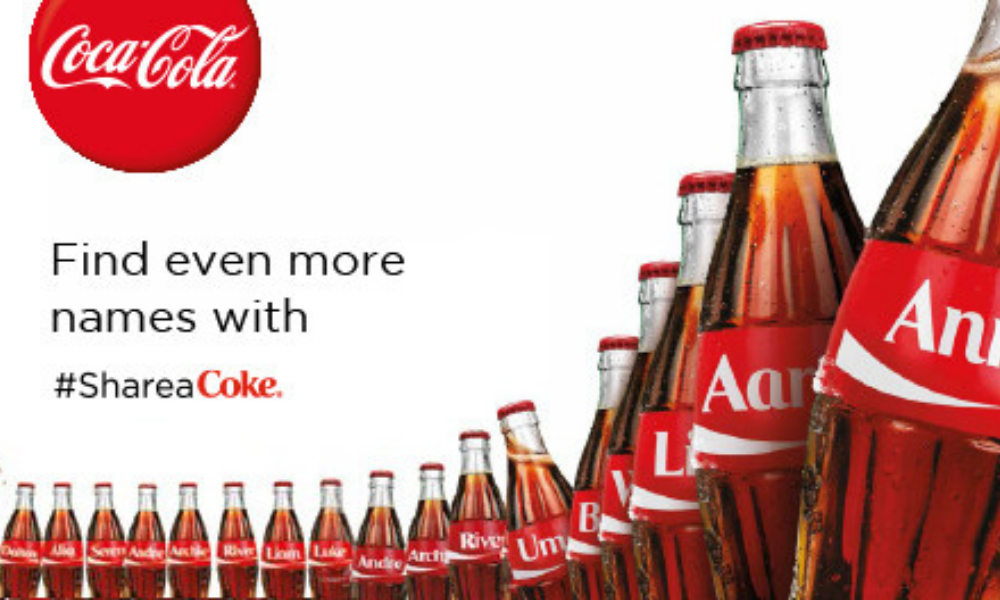
Marketing to Gen Z
Gen Z’s attachment to virtual platforms also means that they are highly connected with each other on the internet, and have a vast array of resources at their disposal.
When trying to grab their attention, marketers should try employing methods that keep their community-oriented interests in mind. These can come in the form of challenges or meetups that foster a sense of community and belonging.
Ultimately, whether it be posting a poll on Instagram, or live streaming to reach a larger audience, Gen Z is receptive to brands that make an effort to personify the brand and allows users to freely connect with a brand’s exposure. Gen Z wants to feel included.
While the pattern seems to be quite clear, Gen Z’s various traits that make them a unique target market to appeal to encourages them to value other characteristics like embracing diversity, sustainability, and inclusivity.
These goals can be integrated into brand promotion to catch Gen Z’s attention.
It’s time for brands to accept this growing appreciation for straightforward advertising, brand transparency, and a desire to create social change in order to appeal to Gen Z and leverage their businesses! This is undoubtedly the best way how companies should market themselves to Gen Z.
Gen Z – a Generation of Influencers
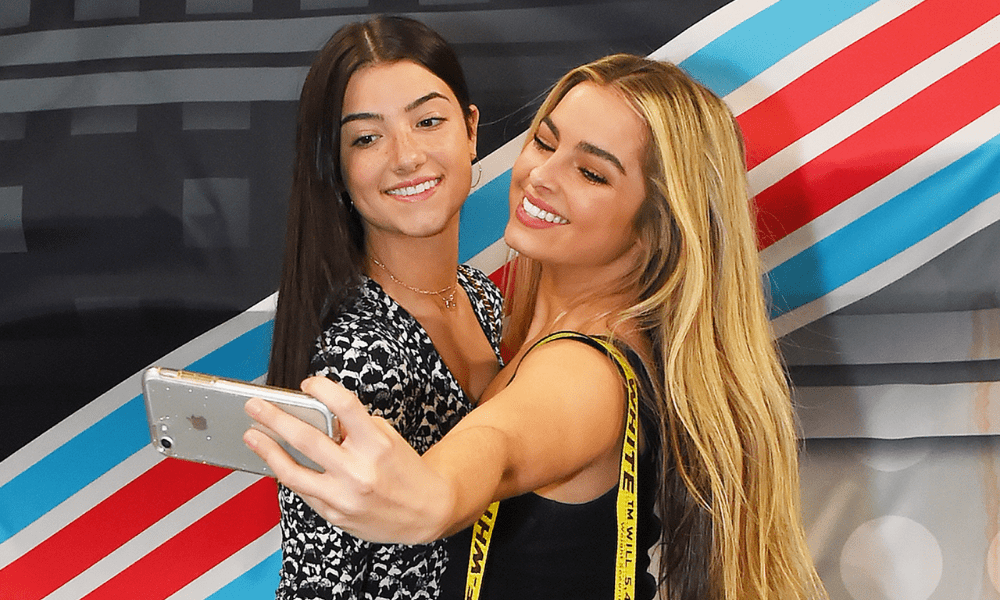
Every person can name at least one imaginary superhero or influential figure they admired when growing up. While these affectionate imaginations are short-lived, the sentiment remains the same. People learn from and trust others.
As people grow older, these admirable characters begin to lose their luster, as new figures enter people’s lives and connect with them more deeply than what they saw on a movie screen.
Today, Gen Z is no longer watching TV, but that doesn’t mean they connect any differently. Instead, streaming and content sharing platforms, like YouTube and Instagram, are classic examples of social media platforms that help foster a host of online influencers to grow their network.
What does Gen Z do with their new imaginary superheroes? Well, they’re no longer imaginary. Around 70% of Gen Zers follow at least one influencer on Instagram or YouTube and are turning to classic social media platforms to satisfy their appraisal.
Building Trust With Generation Z
Gen Z beholds a large percentage of budding entrepreneurs and free thinkers, where 72% of them say they want to start their own business one day. Gen Z’s personalities make them inclined to seek solutions to their problems and be the means to an end.
Like their aversion to advertisements, Gen Z only trusts influencers who are authentic, relatable, and not just trying to shove a product in their face.
89% of Gen Z say that they trust influencers who seem like nice people, and 86% of Gen Z also prefers it when it feels like an influencer isn’t simply trying to sell them products and take advantage of their platform to make money.
To Gen Z, trust is an overwhelming deciding factor in Gen Z’s responsiveness to brands or online content. They tend to value this aspect more since the digital marketing industry can be home to hosts of predators and illegitimate sites preying on inexperienced users.
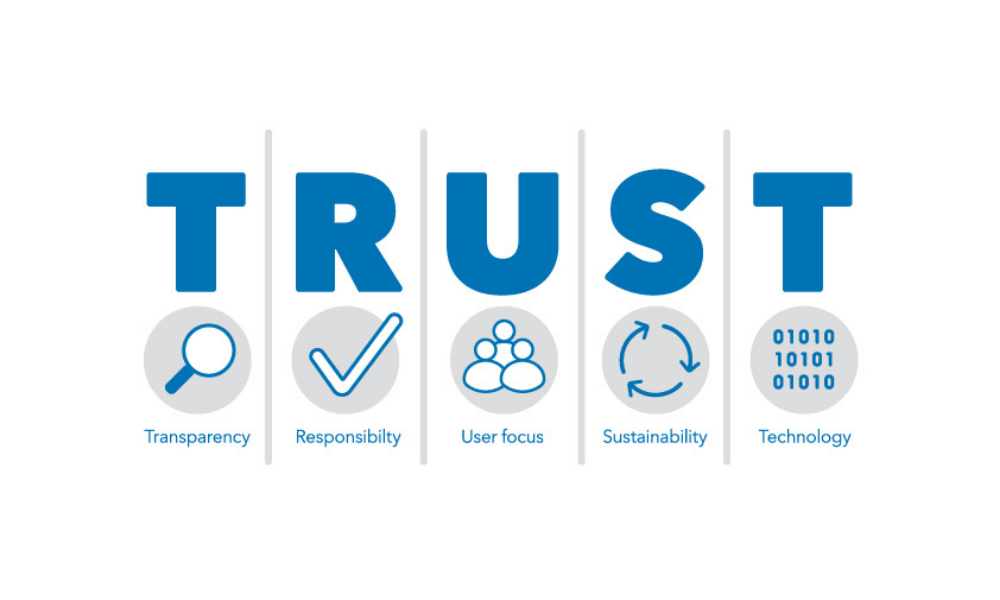
Does this mean the Gen Z is more skeptical and cautious because they know how to navigate the digital world better than any other generation?
Potentially. In a study conducted, millennials reportedly trust companies 71% of the time while Gen Z reports that they tend to trust around 63% of companies, a significantly lower likelihood.
With this disparate difference in company faith evidenced across age groups, it is clear that companies and businesses will have to try a lot harder with Gen Z to win their trust.
The good news is that Gen Z spends a lot of time online, with an average ticking in at 2 hours and 55 minutes per day. Gen Z’s content consumption shows that they will definitely be online for a significant portion of the day to engage with content.
The question is, how will brands use this to market themselves successfully to Gen Z?
Marketing to Gen Z With Influencers
It is clear that influencers are a significant portion of Gen Z’s media consumption.
The influencers Gen Z favors are relatable and trustworthy. They essentially form virtual relationships with social media influencers by following, liking, and commenting on posts, or subscribing and binging their YouTube videos online.
The most effective influencers tend to be those who are genuine and make efforts to get to know their audience.
In an age where billionaire celebrities are the subject of gossip on various blogs and entertainment shows, traditional celebrities aren’t all the buzz because Gen Z might not be able to relate to their lavish lifestyles.
Micro-Infleuncers
Smaller, lesser well-known figures that resemble the average, everyday person, are the types of people brands usually consider for micro influencer campaigns.
The micro influencer marketing campaigns reach larger and more niche groups as a result of trust (a major trait of Gen Z).
While it could be beneficial to invest in a large campaign with a notable celebrity, on average, brands spend an average of 40% of their annual influencer spending on micro-influencers as opposed to 28% on celebrities.
Forming professional relationships with all types of influencers can bring valuable concentrated traffic towards a brand. The advantage of collecting referrals from various sources is especially conducive to an effective growth plan because they use another source’s organic reach.
Capitalizing on this resource can grow your business short term and foster a professional network of connections that can facilitate growth in the long term.
The effects of promoting and marketing through online influencers to Gen Z is encouraging.
Roughly 44% of Gen Z has made a purchase from a recommendation they saw online compared to 26% of the average population.
The market research also supports that 85% of Gen Z users discover new products through social media.
It is also projected that by 2020, Gen Z will comprise 40% of all US consumers, almost half of the entire country.
When collaborating with an influencer to promote a brand, it is still important to align your brand’s goals with the interests of the influencer.
Even though the promotion is coming from a trusted influencer, brands should do their part in ensuring that the content they promote is genuine.
Celebrities Vs. Micro-Influencers
Platforms like Instagram, YouTube, and Snapchat, quickly create pedestals for celebrity figures. Although these individuals are popular with the masses, they appear somewhat distant to their audiences on social media, making Gen Z less likely to trust celebrities over influencers.
The micro-influencer is another type of influencer that usually has a more modest following. As opposed to having over 100,000 followers, these individuals can have anywhere between 1,000 to 100,000 followers and are experts in their niche-specific fields of interest.
New platforms have shown the relevance of micro-influencers in marketing and online branding. As opposed to celebrities, influencers have extra active audiences with higher engagement rates, since they appeal to a smaller range of audiences.
While popular influencers may have larger audiences, engagement rates tend to peak at 1,000 followers. That said, a good amount of followers that generate a healthy amount of engagement reach is somewhere between 10,000 to 100,000 followers.
This is why micro-influencers are successful at generating more engagement and trust in their communities, making them great marketing partners.
Micro-influencers are special because they create niche-specific content for a niche-specific audience. Over 82% of individuals say they would buy a product promoted by a micro-influencer because they feel like they can trust micro-influencers more.
Needless to say, Gen Z makes up a large population of micro-influencer audiences. Micro-influencers tend to attract similar people together, who share a common interest in their area of expertise.
Gen Z loves feeling like they are a part of a community, which makes this type of close-knit environment optimal for growing their bond with others around them.
Influencer marketing can be especially helpful to niche-specific brands. The smaller, more concentrated audiences that micro-influencers garner can be a significant group of potential customers that are interested in your brand.
While celebrities might choose to promote well-known brands, a study found that 70% of teens trusted influencers more than traditional celebrities regardless.
It appears that to Gen Z, celebrity marketing is perceived with some skepticism while influencer marketing holds more power over them in this aspect.
The Influencer Generation
Not only does Gen Z like to entertain themselves by following social media influencers—they want to become influencers.
According to 86% of millennials and Gen Zers. This motivation comes from their high entrepreneurial spirit and the benefit of having a self-confidence boost.
This desire to create an impact is one aspect of the influencer culture that Gen Z subscribes to. With so many self-made Gen Z influencers out there, it is reason enough to conclude that Gen Z can accomplish anything they set their hearts on.
Gen Z doesn’t want to lead without purpose.
They have goals of creating value and inspiring those around them to create change, whether the change is on the micro or macro scale.
Around 58% of Gen Z would use their platform to make a difference in the world, while 53% of Gen Z was uniquely motivated by the opportunity to share ideas with their own audience.
To understand this, brands simply need to take a look at existing influencers. Popular influencers will usually have a defining characteristic that makes them authentic and likable. This can include having a vibrant personality or championing social change.
The takeaway to note is that successful influencers who gain Gen Z’s trust publicize their values that align with Gen Z’s own values and beliefs. To truly connect with this young group of entrepreneurs, influencers and brands alike must understand what Gen Z thinks is important.
Twitch
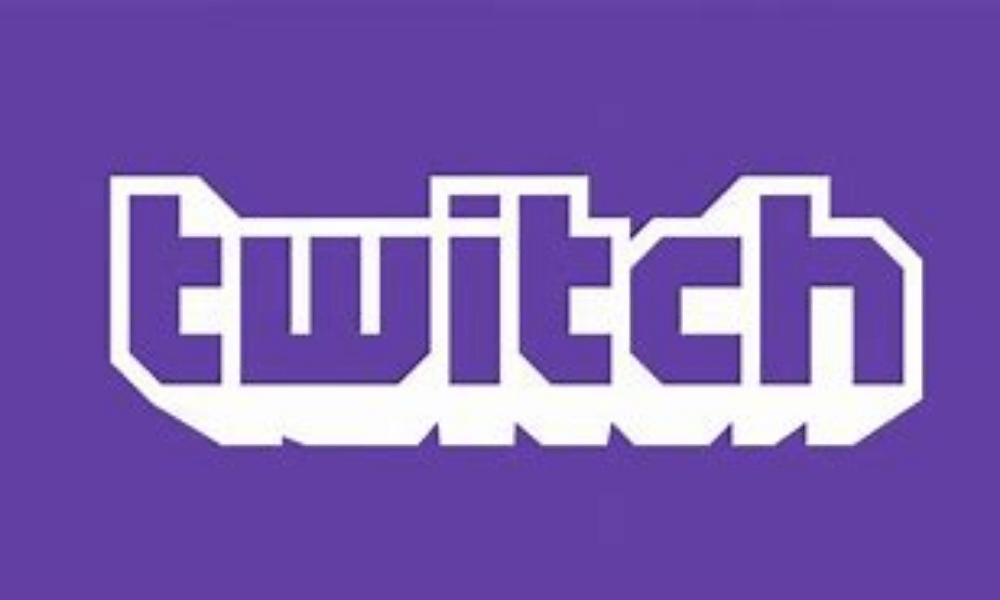
Worldwide streaming has proved to be a hit with young audiences. With 75% of young consumers say they use streaming services for watching shows and other video content, there seems to be nothing the streaming community can’t broadcast.
One popular platform in the streaming community is Twitch. Premiering in 2011, this global streaming platform initially branded itself as a video game streaming medium, which later transitioned to encompass broader audience interests.
Since its inception, Twitch has expanded its streaming services to include content from art, music, talk shows, and more.
With over 15 million users a day, with an average of 95 minutes a day, Twitch is a leading mobile streaming app for Gen Z users. Impressively, in March 2020, an average of 56,000 of these 3.84 million monthly Twitch broadcasters was concurrently broadcasting, demonstrating the medium’s widespread and popular activity.
As individuals begin to turn to technology to get their dose of information, streaming numbers have risen steadily to match the growth of interest, where 82% of online traffic will be composed of video streaming by 2020.
While the streaming community has a laundry list of reliable streaming platforms to choose from, Twitch’s popularity lays at the top of the charts, earning its position as the Top 5 Video Streaming Platforms in 2020.
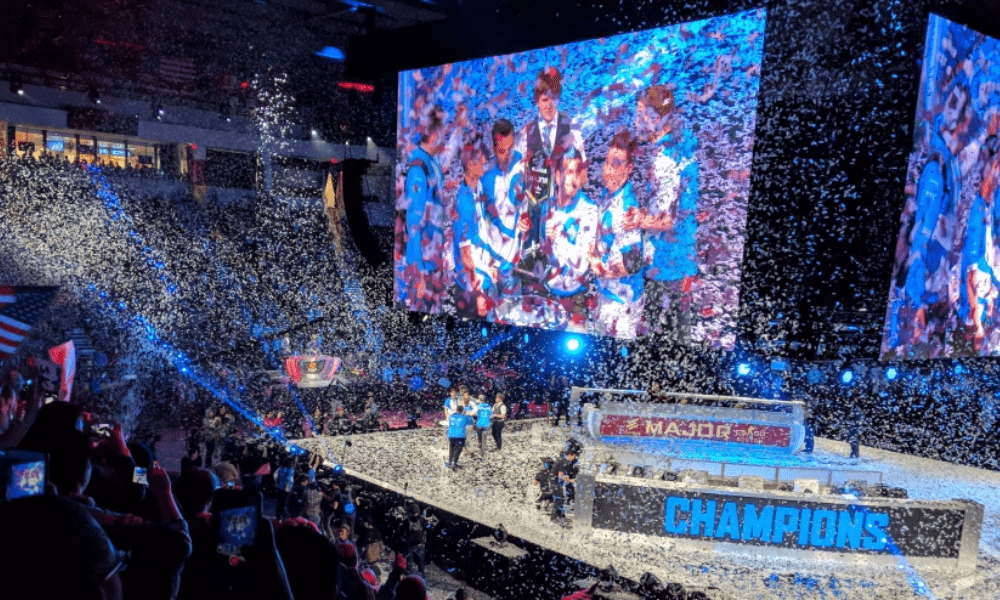
Although Twitch hosts streaming services for multiple interests besides gaming, its platform is among the most popularly used for video game streaming. ESports, one of the most popular streaming events, reached viewing numbers in the millions for an event in Boston in 2018.
The rise of Twitch and other video game streaming platforms signal a shift in conventional entertainment. Besides turning to game for a session of secluded dopamine release, now, Gen Z and other heavy gaming age groups can enjoy a hobby that is multiplayer and engaging.
The streaming industry connects users to other users who share the same objectives. These groups can work together to further their skills, strategies, and build virtual relationships, all using a single platform.
Streaming Fever
In recent years, Twitch’s popularity parallels a steady rise in e-gaming and virtual connectivity. Compared to the 84% of Millennials who confirm that the game, 91% of male Gen Z gamers game regularly.
This larger streaming interest in the younger generation appears to correlate directly to the technologically advanced environment the Gen Z generation grew up in.
Similar to Millennial childhoods, Gen Z has seen the world of gaming facilitated by numerous platforms that cultivate communities of advanced gamers.
Rather than growing up with limited technology that would only allow multiplayer games if both players played in the same room, Gen Z can now connect with individuals from all over the world. This advancement encourages more gaming activity and virtual connectivity.
These new improvements in technology have outpaced the restricted virtual space Millenials had access to when they were younger and prepared the well-endowed Gen Z with advanced technology mobility.
Generation Z – Gaming Subculture and Stereotypes
Along with the steep incline in Gen Z’s interest in gaming and streaming, the growing popularity in these activities has also eroded the negative stigmas associated with gaming and other previously stereotyped activities inaccurately depicted in mainstream media.
With certain streaming channels gaining popularity, Gen Z is paving the way towards a more diverse and accepting society that tears down preconceived notions and accepts all identities.
The eroded stereotypes associated with gaming signifies the advantages that modern technology has on Gen Z and society at large. As virtual connectivity speeds up information processing, the social atmosphere is changing to include a virtual sphere of inclusivity, with Gen Z at the steering wheel.
Generation Z and Streaming Gamers
As for connectivity soars, streaming has become a popular hobby for many. and gaming, as well as other heavily stereotyped pastimes, are beginning to dispel the media’s shady and biased portrayal of these activities through their increased exposure.
The ubiquity of streaming and consuming new gaming content has encouraged more users to watch streams.
This is entertainment. It also marks the erosion of the archaic perceptions of media-painted inaccuracies, also signifying a reason for the growing popularity of streaming.
To Gen Z, streaming is an outlet and escape from the world.
When mainstream media portrayed gamers in a bad light, streaming was slowly becoming more popular until millions of streamers could be found worldwide.
This increase in streaming and connections is another testament to the advanced networks and resources Gen Z has at their disposal. They are more resourceful and creative as a result of their expanded knowledge.

As with the 21st century, routine, quick consumption of content has more and more users interested in niche-specific activities that were previously not as accessible.
The introduction of better resources quickens the spread of ideas and new information. This facilitates Gen Z’s short attention spans and their propensity to jump from trend to trend. This is also why certain ideas and trends happen to go viral in a matter of hours with Gen Z. But also die out quickly.
In Twitch’s popular gaming community, gamers are beginning to see the possibility of attaining professional status.
Gamers earn money from streaming and playing video games.
The popularity of the gaming industry has kindled a new segment of professional gaming. Streaming platforms like Twitch can create the optimal breeding ground to spawn the next generation of professional gamers and promote their own business.
The majority of gamers turn to games for entertainment and stress-release. Yet, the growing prospect of professional gaming as a stable career option draws more user interest to stream videos by their favorite gamers and build communities that support certain streamers.
Streaming platforms have also created affiliate and partnership programs in the advent of professional gaming. This helps to increase their platform visibility and allow budding streamers to earn money while they grow their own platform.
Around 1,000 partnership applications entering the Twitch offices each week. The selection process is tasked with the process of selecting the few that demonstrate authenticity, personability, and entertaining personalities.
Twitch’s method of picking partnership contract recipients is reflective of the platform’s most valued traits. In Twitch’s eyes, if streamers are “focused on creating a healthy community,” they will receive as much support Twitch can give them to help propel their career.
After all, these chosen partners are representing the brand of Twitch streaming and upholding Twitch’s reputation in the streaming community.
Today, the video streaming industry is a multi-billion dollar industry that features notable gamers from all walks of life.
Despite its shadowy portrayal in mainstream media following its birth, Twitch and other streaming platforms have expanded gaming to the world stage. There the concept of gaming isn’t negative and heavily stereotyped.
Ubiquitous streaming, gamers, and other lesser-known streaming interests are more associated with positive connotative descriptors, such as “fun” and “social”. They are not bound to the narrow classifications the media previously portrayed.
Gen Z Is Community Oriented and Connected
As the gaming scene grows prevalent among younger groups like Gen Z, the industry is facilitating Gen Z’s curiosity and tech-savvy abilities to allow them to pursue niche-specific interests through streaming.
Through an extensive network of streamers in relevant fields, Twitch attracts global audiences from anywhere in the world. Android and iPhone users alike, Twitch allows users to stream anytime they want, anywhere they’d like.
Gen Z is becoming more connected with global users and influencers
In an age where entertainment is squeezed from countless hours of binge-watching and playing virtual games, live streaming platforms offer easy connectivity to other consumers across continents.
Twitch creates an engaged community of individuals who share similar interests and want to share information to perpetuate the learning community. Compared to Baby Boomers Gen Z is 22% more likely to feel that their virtual communities understand their passions better than any of their friends or family.
This is because the virtual world can easily create communities that share similar interests. Inside the streaming community, Gen Z is welcomed into a network that fosters a sense of belonging and trust between streamers and audiences.
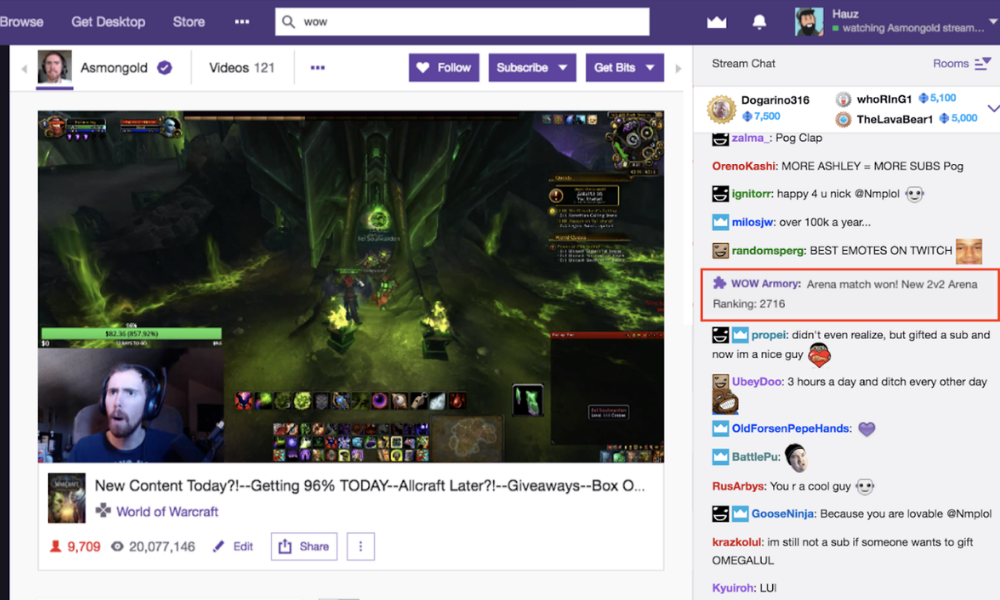
What else keeps Gen Z interested, then? Gen Zers are known to have minuscule 8-second attention spans. That makes it difficult for them to concentrate on long content, like movies or streaming videos.
What makes streaming different from watching normal long content?
First, popular streamers often possess unique personality traits that are often over-fabricated in conventional advertising. These types of overpolishing and ingenuine portrayals of products deter Gen Z more than it impresses them. It gives them a reason to ignore advertisements that seem too ingenuine.
Gen Z consumers’ loyalty to Twitch streamers means that they enjoy platforms that have complete transparency and showcase an authentic personality rather than a fake person created for marketing purposes.
Second, Twitch provides Gen Z a platform that fosters a community.
The community of like-minded individuals who share interests through live streaming features and personalized chat rooms.
Twitch’s one-of-a-kind experience allows users to have access to a variety of niche-specific interests streamed by various streamers and personalities.
The platform’s success is attributed to the humorous aspect of streaming commentary and the feeling of community that accompanies each unique channel.
These streamers can use their platform to connect with their audiences on a deeper level.
While they narrate their latest adventure in the most popular video game, streamers essentially treat audiences like their friends.
It’s no wonder why Gen Z is hooked on Twitch and other streaming platforms.
Streamers are usually very authentic and genuine towards their audiences.
Streamers usually give off a vibe that attracts users to follow and stay on their channel.
Twitch promotes an informal and entertaining interaction between streamers and audiences because it knows that Gen Z is inclined to stay around when they are engaged.
Gen Z loves to feel like they are a part of a community larger than themselves.
They also enjoy promoting similar causes or interests in niche-specific and personalized forums. All of which are satisfied through streaming communities.
Gen Z’s adaptability to new technology forms also increases their likelihood of sharing and growing Twitch’s user base.
Because Twitch has broadened the scope of streaming interests, streaming has become a popular way to bring various groups and communities together.
Twitch’s variety allows users to share information. It also acts as a form of entertainment and creates a concept of family.
Multi-Device and Multi-Platform Connectivity
As streaming platforms become more popular, it is clear that video game streaming has become a regular pastime for avid gamers, especially Gen Z.
This means that Gen Z users spend more time playing video games and connecting with others via streaming devices as well. These services simultaneously encourage Gen Z users to play more video games and effectively more frequent streaming.

Strategically, video game producers take advantage of this complementary relationship as a method to market their products.
Consoles embed streaming functions that encourage streaming with apps like Twitch.
These easy-to-use, conveniently connective devices are another reason why Gen Z is hooked on these new pastimes. Gen Z appreciates the built-in features of streaming platforms and gaming consoles that improve the user experience.
A study also found that poorly designed mobile features would cause Gen Z to completely drop a product 23% of the time. Making sure to test out the user experience in all products is a must to impress Gen Z.
Advertisement Aversion in Gen Z
The factors that determine the popularity of streamers are good indications of what types of content Gen Z likes. Often, advertisements that Gen Z ignores fail to implement unique qualities to its visual presentation.
It makes it compelling, or miss the opportunity to connect with their audience.
The new century brings more attention-grabbing content to cater to the young audiences that comprise a large component of the market that satisfies Gen Z’s expectations.
The bulk of advertisements seem to emit a cold and distanced persona that Gen Z isn’t responsive to.
Instead, Gen Z wants to be persuaded through unrehearsed phrases and genuine emotion. They also respond to story-telling and genuine interest in improving the world, interests that concern Gen Z as well.
Most importantly, Gen Z will pay attention to people they can trust. This is why Gen Z is obsessed with streaming platforms that connect audiences to influencers.
It is this close connection that stems from the casual streaming conversation that makes Gen Z trust.
Gen Z Streamers Marketing and Monetizing Their Content
Twitch also possesses unique advantages for streamers. The platform is integrated with Amazon Prime and enables streamers to earn money through in-stream links where viewers can purchase streaming games.
Just like this seamlessly embedded integration, brands can also partner with streamers. Streamers are usually on camera for longer periods of time and have more freedom with what they broadcast. Due to that, partnering with a popular streamer can also give them more freedom to be creative with your promotion.
This feature is also one of the reasons why streaming is so popular. Streamers can be nearly anyone and have a lot of freedom with how they decide to stream.
Popular streamers range from professional gamers to amateur gamers. Whatever the skill level, Twitch has shown anyone can have their own live stream and garner a decent amount of support.
Streamers have a unique job as influencers and personalities on this app. They can provide valuable insight to master certain skills or navigate a challenging game, or simply a source for entertainment.
The beauty in Twitch lies in its freedom to cater to each channel uniquely.
Not all streamers are professionals in the field
Sometimes streamers get thousands of views because viewers simply enjoy the humor and personality of the streamer. There is no one size fits all, and streamers of different skill levels can be successful on Twitch.
Similar to other influencers present on other platforms such as Instagram or YouTube, Twitch is a breeding ground for gaming and personality influencers.
Twitch’s and other streaming platform’s popularity is a sign of growing interest in streaming. It is also an affirmation that Gen Z gravitates towards a specific type of influencer.
Gen Z users tend to gravitate towards quick content. The streaming platforms demonstrate that prolonged entertainment coupled with entertaining influencers. This can make viewers sit for hours and stream any video.
Streaming platforms like Twitch and popular apps such as TikTok confirm that video and streaming platforms are taking over. These platforms are entertaining and easily adjustable to accommodate Gen Z’s preferences of interactive and engaging content.
Buzzfeed And Generation Z

Launched in 2006, this American media news entertainment company has consistently been a significant source of entertainment for Gen Z.
As the generation that grew up around technology, Gen Z is notorious for staying on top of trends but also abandoning them quickly to chase a new wave as they come. What makes Buzzfeed so consistently popular to Gen Z, and why hasn’t Gen Z moved on yet?
Buzzfeed has coined Gen Z as “Generation E.T.C.”, standing for Generation Empathy, Truth, and Creation. These three pillars summarize Gen Z’s internal values and the elements of content that Gen Z responds to the most.
Because Gen Z values these three characteristics, Buzzfeed’s content structures around each of these values to maintain Gen Z’s interest to connect with them better.
Personalized Content for Generation Z
Buzzfeed isn’t just a news source. The media company hosts a range of interactive content on its website and channels that can keep anyone browsing for hours.
If you were to ask any Gen Zer about a unique feature of Buzzfeed’s addictive content, you’d probably be answered with the word “quizzes”.
But, hold on, don’t quizzes mean academic quizzes that test you on certain topics you’ve studied in class?
No, no. Buzzfeed quizzes are in a league of their own. These “quizzes” aren’t literally graded assignments that Buzzfeed gives to its users. The company coined their own take on these personality quizzes to make them creative and attractive to Gen Z, who always seeks to be understood.
There is a reason why Buzzfeed quizzes are so popular.
They cater to Gen Z’s E.T.C. values: empathy, truth, and creation. Buzzfeed quizzes usually have a theme or question. They got a purpose to seek to understand the quiz taker and give them a result about their personality or character.
The process is similar to the sorting hat in Harry Potter. Users take a quiz and are sorted into multiple categories that are usually humorous and random.
Buzzfeed quizzes can range from testing what kind of Pop-Tart flavor you embody or even play the mind-reader, by guessing the quiz-takers favorite color.
If you take a look at any Buzzfeed quiz, the questions they ask seem completely irrelevant to the quiz’s theme.
Quizzes can try to identify user’s favorite color and ask what their favorite dessert is in the middle of the quiz.
This unpredictability is also what makes Buzzfeed refreshing and popular for Gen Z.
A group that quickly moves from one trend to the next. By keeping things exciting, Buzzfeed is a stable source of interest for Gen Z.
When users get their results, they can also share it on social media and invite their friends and family to try out the quiz.
Obviously, these quizzes are merely for entertainment. Nonetheless they showcase an element of creativity and personalization that makes Buzzfeed stand out to Gen Z. This spontaneity is what makes Gen Z go crazy. They love original, quirky content that is interactive, shareable, and personalized.
Get To Know Gen Z
Not only does Buzzfeed have interactive quizzes, but its main site features a navigation bar that lists close to everything Gen Z likes to do in their spare time. Buzzfeed offers commentary on the hottest Netflix shows, recipes to try during quarantine, and even updates on current events.
The media platform is an embodiment of where Gen Z’s interests lie but presented in a palpable manner.
Buzzfeed knows its audience well and what they’re up to.
They make sure their coverage features all of these interests, to guarantee that Gen Z can browse unlimited content.
Buzzfeed’s categorized content also makes it clear that Gen Z enjoys leisure but is also serious about knowing what’s going on in the world.
Its wide variety is also complemented by its ownership of large cross-platform networks that branch out from the main media entity, Buzzfeed Originals, which features the classic articles, lists, quizzes, and videos.
The other cross-platform networks host more niche-specific interests, like product development, cooking tutorials, and news coverage. Buzzfeed’s many departments encompass the broad range of interests Gen Z has and transforms informative sources into entertaining experiences.
Take Buzzfeed Media, for example, which hosts the largest food network, Tasty.
Tasty And Marketing to Gen Z
Tasty became a standout addition to the Buzzfeed community in 2015 by featuring quick clips on how to make delicious recipes. From its inception, Tasty featured its iconic short and sweet videos that frequently featured tutorials and challenges.

If you watch one of Tasty’s YouTube videos, you’ll understand why it racks up its millions of views.
Tasty is known for integrating seamless transitions, entertaining voiceovers, satisfying camerawork, and oh, right, the delicious food recipes. Those can be head-turners for everyone, even if you aren’t Gen Z.
Beyond the camerawork and editing artistry, their success is also accredited to the types of foods that they feature.
Most of Tasty’s recipes tend to focus on foods that genuinely evoke nostalgia, feelings of comfort, or other experiences.
These emotions can encourage the viewer into browsing more videos that look entertaining or remind them of a fond memory.
Crazy how videos of making food can become so popular, right?
Tasty’s successful content reminds us that good presentation and strategic consideration can rack up more clicks per impression.
Marketing Via Stimulating positive emotions
Its content is also digestible and packaged neatly so it’s easy to understand what’s going on in the video.
Buzzfeed Videos YouTube channel also garners much support. With over 20 million followers, the popular media company definitely has some tricks up its sleeve.
For one, Buzzfeed integrates what would normally be considered “behind-the-scenes” clips into the main video.
Its staff members are free to act goofy and genuine on camera. They don’t need clips filed away as “bloopers” or footage that won’t make it into the main video.
Blooper Reels Create a Real Connection
Buzzfeed emphasizes the genuine nature of videography and virtual connection. That’s done by using parts of the “blooper reels” that make the staff seem more relatable to. It lets viewers into Buzzfeed’s transparent world, making connecting with Gen Z easily.
In many of Buzzfeed’s trendy and quick videos, viewers are also brought along. With the vlog-style videos that Gen Z often spends time watching. These videos are typically more casual and meant to showcase an element of someone’s life. Usually the one that is more everyday, normal, and personal.
Gen Z frequently watches these types of content found all over YouTube, because they love the authenticity.
With so many different ways to connect with its audience, Buzzfeed’s staff also garner a significant amount of admiration. They are spokespeople for Buzzfeed and often get unwavering support for their entertaining personalities.
Sometimes it’s easy to forget that creating videos is their job. It looks like they’re having so much fun making content.
The unique aspect of Buzzfeed is that its brand facilitates the growth and connection between audiences and its employees.
Through this method, it makes it both fun for the viewers and exciting for the staff to watch and create content.
Buzzfeed also features videos in other video formats.
Sometimes, Buzzfeed has more experiment-style videos, conversational interviews, and challenge-oriented experiments. It allows viewers to get to see Buzzfeed staff try out new things and get to know them better.
The standout feature with Buzzfeed’s content is that they almost make video creation seem entirely seamless and genuine.
It doesn’t feel as if you are watching them read off a script. Rather, Buzzfeed employees are there to have fun and take the video where it goes naturally.
This is likely one of the defining characteristics of Buzzfeed. Also, an explanation of why the company is a huge success with Gen Z: they appreciate raw authenticity and genuineness.
Positively Transparent
Buzzfeed’s content is also categorized into three types: identity, information, and emotional gift. Buzzfeed uses these categories to ensure that they produce content that is relatable to their viewers and informs them.
No better match can be made to attract Gen Z. They are a generation seeking answers to the world’s problems in a like-minded community. Buzzfeed allows Gen Z to self-identity, express, and learn about the world around them in a positive light.
The content Buzzfeed produces seems genuinely entertaining and random. However, the media company meticulously makes sure that its content follows several consistent themes to appeal to broad ranges of audiences.
Buzzfeed’s content is overwhelmingly positive
Interactions between employees and viewers are always happy and inclusive. This gives little room for drama or any negative aftertastes when users interact with their videos and other mediums.
Another aspect of Buzzfeed’s video content is its transparent and clear-cut packaging. Frequently, in efforts to attract as many clicks, content creators use clickbait or outrageously exaggerated titles. That would draw attention to the video that often doesn’t reflect the extremity presented in the video title.
Buzzfeed frames their titles in a truthful and consistent manner. Viewers know exactly what content they’ll be getting from the video. Clickbait hype can get users excited about clicking on the video. in short, Buzzfeed knows exactly how reach out and market to Gen Z.
Nonetheless. they’ll soon be disappointed when the video often doesn’t meet their expectations and won’t be back for more content.
This drop-in satisfaction is similar to Gen Z’s response to advertisements that appear ingenuine or overly exaggerated. Gen Z tends to react the same. They refrain from content that isn’t authentic and seems too good to be true.
When creating any type of content, whether it be a post or an advertisement, be sure to check the quality and the authenticity of what you post.
Gen Z will be able to sniff out any off behavior. It’s a good idea to be thoughtful of what brands put out there!
Regardless of which platform it is, Gen Z certainly has their preferences when they browse online.
To make sure both parties are making the most of their time and resources, marketers should make sure that what they put out there is relatable, entertaining, and genuine. That’s how you connect with Gen Z!

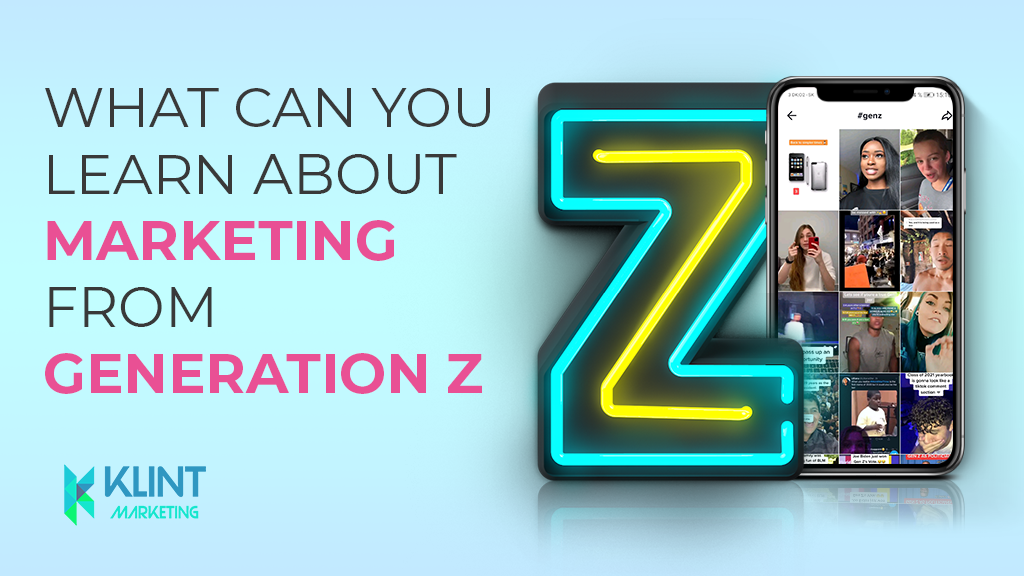
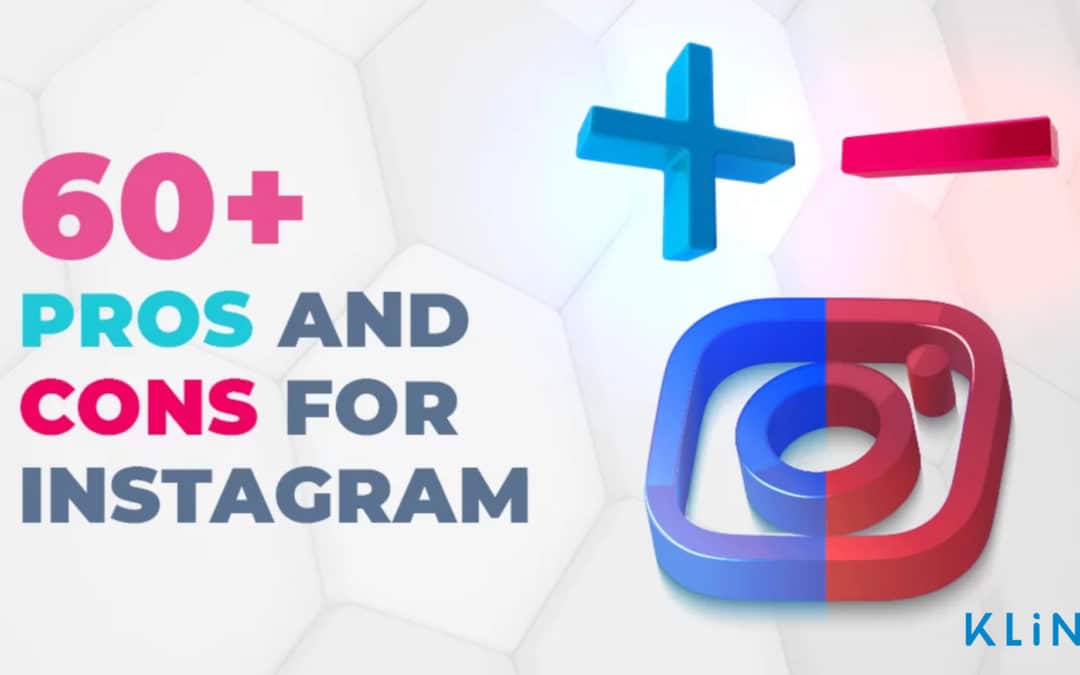
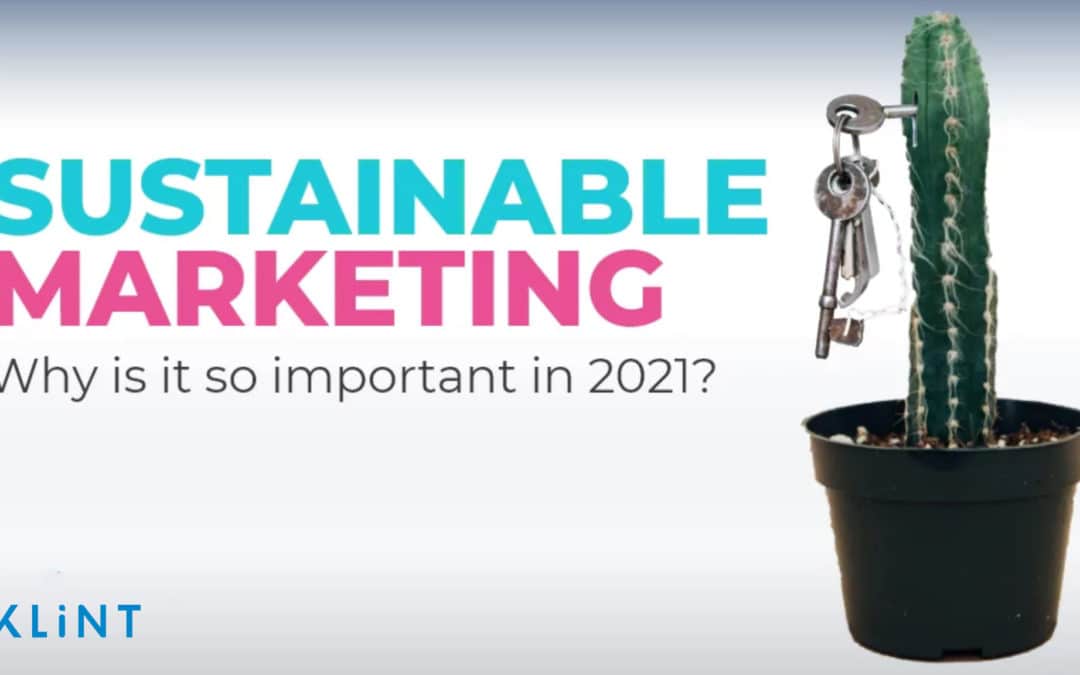

0 Comments